With their frilly, flirty edges, spicy clove scent, and fuss-free charming simplicity. Perennial dianthus (commonly known as "pinks") are an inspired addition to gardens with styles from cottage to contemporary. Did we mention they attract pollinating insects, butterflies and hummingbirds with their nectar?
Firewitch Dianthus
More cold tolerant than many other dianthus varieties, this may remain evergreen in warmer winter regions. Zone: 3 - 9. Learn more
PHOTOS: Doreen Wynja
Adding cheerful color to beds and rockeries, containers and cutting gardens from spring to early fall. One of the most popular types of Dianthus are "pinks". (A genus of more than 300 types that include carnations and Sweet William). An old-fashioned favorite grown for their fragrant flowers and low-to-medium height front-of-the-border star power. Pinks are herbaceous perennials and are evergreen or semi-evergreen depending on your zone.
Here's how to successfully grow pinks.
What are Dianthus?
Dianthus is a genus of plants native to Europe and Asia with more than 300 different species. This includes florist-favorite carnations (Dianthus caryophyllus), Sweet William (Dianthus barbatus), cheddar pinks (Dianthus grataniapolitensis), and Chinese pinks (Dianthus chinensis). Plus, alpine pinks (Dianthus alpinus), and, of course, the one you will see most often, garden pinks (Dianthus plumaris).
With their wide range of colors, habits and a generally tough, fuss-free and adaptable nature. It's clear why cultivation of dianthus in the garden dates back hundreds of years. Easy to grow and typically ignored by deer. All types of dianthus have a place in the garden (and vases and bouquets). However, if you're looking for the classic cottage garden variety with abundant single or double frilly flowers, look for pinks. It's pretty easy to guess where pinks got their name. The frilly, notched edges of the petals look like they were cut with pinking shears.
About Dianthus
Zones: 3-9, differs by variety
Height/Spread: 4 to 36 inches tall, 4 to 24 inches wide
Light: Dianthus bloom best with at least six hours of full sun. However, they can tolerate partial shade, particularly in the warmest zones.
Bloom time: Spring to early summer; some rebloom intermittently or continuously through summer and fall. All benefit from regular dead-heading.
When to plant: Perennial types are best planted during cooler months in spring or fall. This is to encourage deep rooting and compact shape.
Characteristics: Flowers, in nearly every color except blue and including bi-colored ones, are single or semi-double. Or, double with frilly petals depending on species and variety. Foliage is strappy and grass-like and can be found in shades of green, blue-green or silver-green.
How to Choose the Best Dianthus for Your Garden
With many to choose from, selecting the right variety of dianthus comes down to many things. From what you're trying to achieve in the garden to how much planting space you have. As well as what colors you like.
Here are the questions to ask and answer:
- Where am I planting?
- How much planting space do I have?
- What color speaks to me?
First begin by evaluating where you need some oomph in your garden and how much space you have to fill. Then choose the variety that delivers.
For front of borders, containers, rock gardens, modern gardens, and smaller spaces: Lower growing varieties including some types of garden pinks and alpine pinks are ideal for adding softness to rock gardens. Or, massed as a simple, tidy groundcover in a modern setting.
For beds, middle of borders, larger containers, edible and cutting gardens and larger spaces: Taller varieties including some types of garden pinks as well as Sweet William and carnations have big impact when massed. It can be a go-to vase filler when planted in rows for cutting.
On the topic of color, that's where the choice gets harder. Dianthus colors have a range. From searing hot hues of magenta, red, and cerise, to more soothing tones of pink, peach, and creamy-white. If you have an established color palette in the garden choose one that fits and amplifies. Or, if you want a bit more contrast, select a different color for drama. Dianthus plants typically only thrive for a few years before needing to be replaced. Therefore, it's a plant with which you can have some limited commitment fun.
Six Hardy Dianthus Pinks For Your Garden
Mountain Frost™ Pink PomPom Dianthus
Delightful rose-pink double flowers provide bright burst of spring color blooming until autumn. May remain evergreen in warmer winter regions.Zone: 5 - 9. Learn more
Whetman Stars™ Stargazer Dianthus
Fragrant, fringed, single blooms with a deep maroon eye, carried on sturdy stems. Hardy, may remain evergreen in warmer winter regions. Zone: 4 - 9. Learn more
Delilah™ Magenta Dianthus
Prolific magenta flowers bloom continuously from early spring until autumn. Great for landscape borders. Evergreen in warmer winter regions. Zone: 4 - 9. Learn more
Scent from Heaven™ Angel of Peace Dianthus
Exceptionally fragrant masses of frilly pink flowers with red centers on a compact perennial. This thrives in a wide range of zones and conditions. Zone: 4 - 9. Learn more
Mountain Frost™ Pink Twinkle Dianthus
Continuous bright bicolor pink flowers from early spring until autumn. Silver-green foliage may remain evergreen in warmer winter regions. Zone: 5 - 9. Learn more
American Pie™ Georgia Peach Dianthus
Fragrant, blush-pink petals surrounding coral centers on sturdy stems that do not flop! May remain evergreen in warmer winter regions. Zone: 4 - 9. Learn more
Where to Plant Dianthus
Dianthus are not especially fussy. Although a non-negotiable is being exposed to at least six hours of full sun each day. In the warmest climates, dianthus can benefit from light afternoon shade. All dianthus enjoy rich, well-drained soil.
Dianthus is typically deer-resistant so it is a good choice where deer are an issue. Unfortunately, the same doesn’t hold true for rabbits who find dianthus a delectable snack. If rabbits are a persistent issue in your garden, plant in a fenced area which is more difficult to access.
Soil Preparation for Dianthus
While pinks are typically happy little garden wonders, the one thing that can cause them to fail is stem rot. This condition can occur when dianthus are planted in soils that do not drain well. Prepare soil by loosening to a depth of about 12 inches with a garden spade. Then add 2 to 4 inches of compost (more if soil is mostly clay, less if soil is mostly sandy). Mix well then water to settle soil, Plant according to label directions for depth and spacing.
General rule: Pinks, carnations and Sweet William perform well in rich, well-draining soil that’s kept evenly moist but not soggy. Alpine dianthus, such as cheddar pinks, prefer a slightly alkaline, sandy soil with excellent drainage.
How to Care for Dianthus
Once established in a location that suits their particular needs, dianthus are typically fuss free. They need only a bit of regular attention to thrive.
- Watering
- Feeding and mulching
- Deadheading
- Pests and diseases
Watering: Water regularly - weekly, or more often in extreme heat or containers.
Feeding: Monrovia plants they've been container-grown in a custom soil blend with added mycorrhizae. This is so that once planted in the correct soil, they will naturally get off to a great start. Add balanced fertilizer at the time of planting. Once established in the garden, side dress with a balanced fertilizer and a light layer of organic compost in spring. Do not apply organic mulch around the stems of dianthus as this can contribute to rot or fungal problems. Instead opt for gravel to suppress weeds.
Deadheading: Dianthus bloom hard and heavy in spring and intermittently throughout the season until early fall. Additional sequences of more lavish blooms can be encouraged with regular deadheading which is removing spent flowers from their stems.
Pests and diseases: Insect problems can include aphids, slugs, snails, sow bugs or grasshoppers. Stay ahead of any issues with early intervention.
How to Design With Dianthus in the Garden
Can your garden use some old-fashion romance and colorful charm? Of course it can! Here are a few ways to use dianthus in your landscape.
- Add to borders and containers where you are most likely to pass by during the heat of day. Especially when the spicy fragrance is at is most alluring.
- Layer into mixed plantings in windowboxes. Or, for a more streamlined look by planting both lower growing and taller dianthus varieties in the same box. If you wish, add one different type of plant for contrast. (We love the spikes of lavender or the wider blooms ofconeflowers orSunBelievable™ Brown Eyed Girl Helianthus)
- Play up the soothing grey-green foliage by massing with similarly-hued plants such as sages, rosemaries, and lamb's ears.
- Use in a potager (mix of edible and ornamental plants) as an edging for beds. Or, to hide the lower parts of plants such as tomatoes or climbers such as peas or beans.
- Plant taller types of dianthus in rows to create a cutting garden in your own back yard.
- Combine in a mixed border with other cottage-style plants such asroses, peonies and hardy cranesbill geraniums.
6 Companion Full Sun Lovers to Keep the Color Coming
Sun-loving garden favorites perfect for mixing and matching with dianthus.
Keiko™ (Adored) Itoh Peony
Large, semi-double to double, lightly fragrant flowers on strong stems above a compact mound of dark green foliage. Cottage classic. Zone: 4 - 8. Learn more
Little Spire Russian Sage
Spikes of fragrant lavender-blue flowers add a sense of lightness to the garden. Especially on a more compact version that does not flop over. Zone: 4 - 10. Learn more
Goldsturm Black-Eyed Susan
A colorful, fuss-free border plant that's also an excellent choice for cut flowers. Tolerates heat, humidity, and clay soil. Zone: 3 - 9. Learn more
PowWow® Wild Berry Coneflower
Breathtaking, fade-proof, rosy purple flowers from early summer right into fall, without dead-heading! Magnet for pollinators. Zone: 3 - 9. Learn more
SunBelievable® Brown Eyed Girl Helianthus
Multi-branching, heat tolerant, non-invasive annual produces over 1,000 flowers in a single season, from spring until first frost. Zone: All. Learn more
Munstead Lavender
So fragrant! Compact with those flower spikes and grey foliage. gorgeous in perennial borders, herb gardens, and mass plantings. Zone: 5 - 9. Learn more
Learn More
See all Dianthus. See all Monrovia plants.
For more inspiration and information, please subscribe to our monthly newsletter.
Related posts:
Essential Cottage Garden Plants for Colder Zones





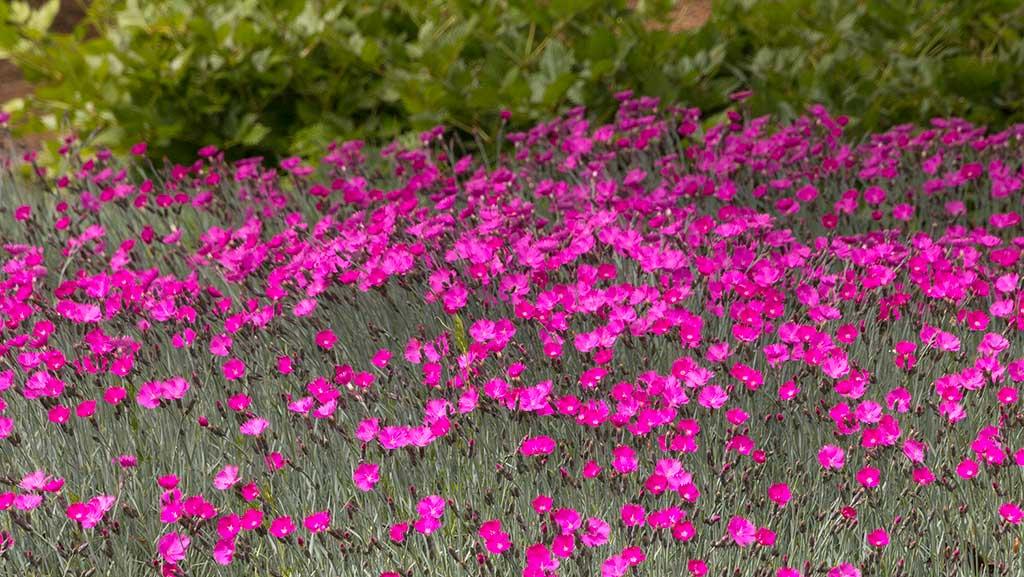
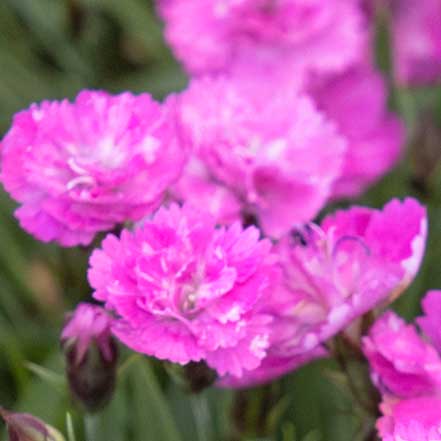
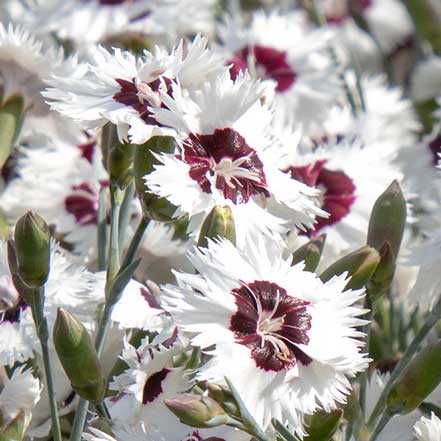
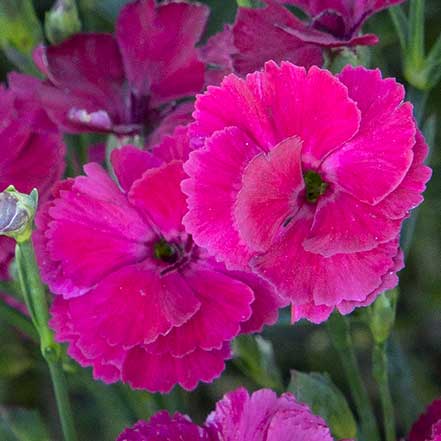
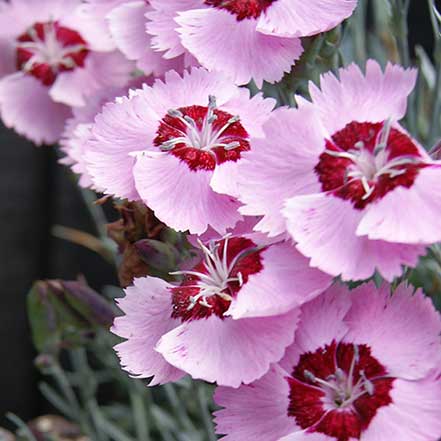
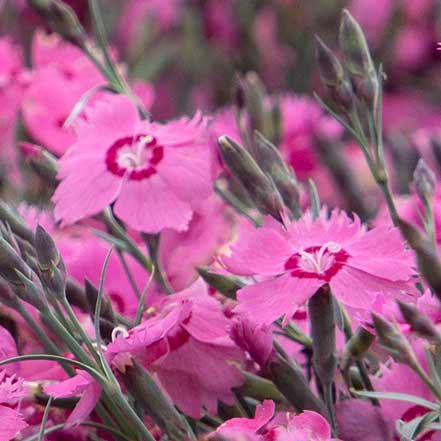
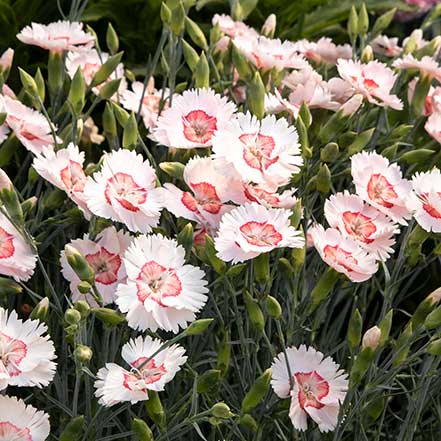
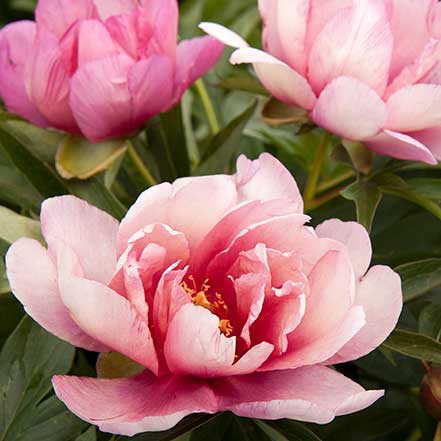
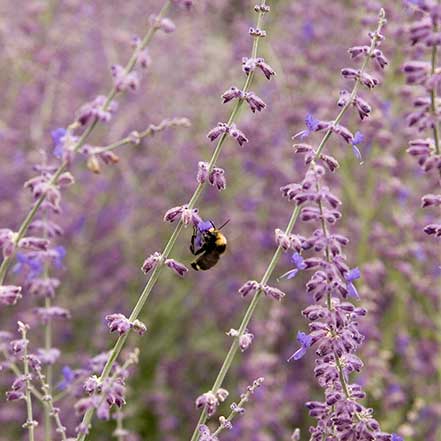
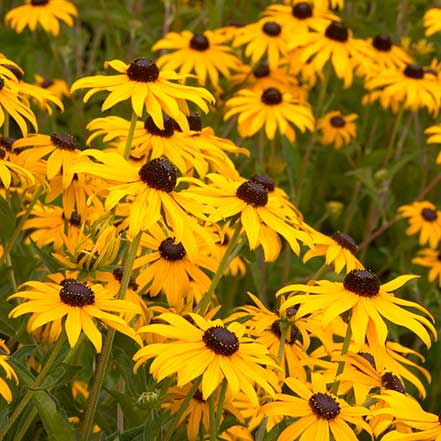
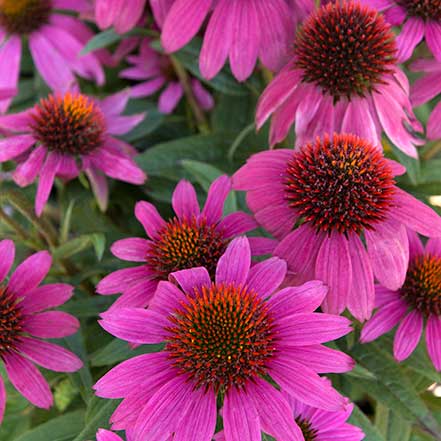
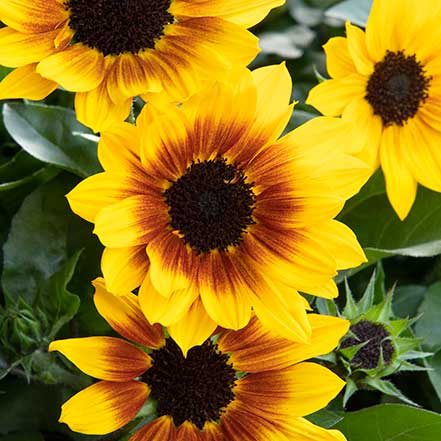
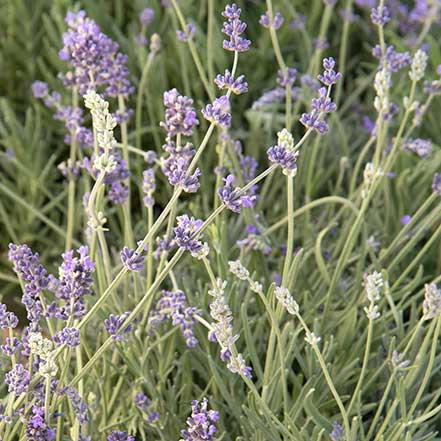
Please login to comment.
Don't have an account?
Sign Up for free